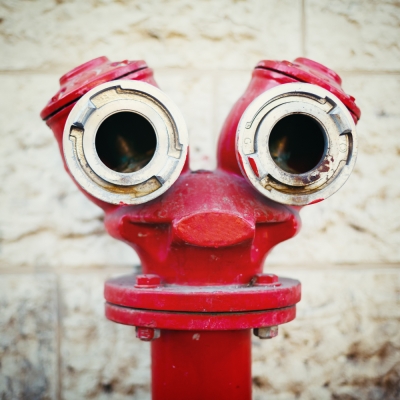
I consider the learning of the subject and the predicate – the way the sentence is divided – the major need for writing without error. The subject tells you what the sentence is talking about. The predicate tells you what the subject is doing, or the subject’s state of being (I am tired). You need to know your subject and the predicate to ensure that the verb (in the predicate) matches the subject in number and tense. If your verb does not match your subject, the sentence is grammatically wrong.
Incorrect: My kitten always chase its tail. The verb “chase” does not agree with the singular subject “kitten.”
Correct: My kitten always chases its tail.
Determine with subject and then choose the verb to match it! If you are not sure of the number and the tense of the subject, you will end up choosing a non-matching verb.
Incorrect: A section of top leaders want Mr. Sukhu to continue in his post.
The verb should be “wants” since the subject is “section” (singular). The writer of his sentence has taken “leaders” as the subject. It is not!
So, how do I find the subject? Pick the verb and place “what” or “who” before it.
“Who” is for people and “What” is for the rest. The answer is your subject. So, who want Mr. Sukhu to continue? “A section” (not all leaders). “Section” is singular, so you have to use the singular verb “wants” to match “section.”
When you learn to identify the subject of a sentence you realize that
- The subject need not look like a standard noun, for example, a book, boy, tree. Swimming is a good exercise. Subject: Swimming
- The subject is not always found in the beginning of the sentence. After a long walk, he found the house. Subject: He
- The subject is not always present in the sentence. It can be implied, understood. Please switch off the fans. Subject: You. In most command (imperative) sentences, which are addressed to people, “you” is dropped.
- The verb is not always placed next to the subject, as in “The kite flew.”
Sentences are made where there is a group of words between the subject and the verb. “The beauty of the mountains, rivers, snow and the gardens of Kashmir overwhelmed me.”
Subject: The beauty
Verb: Overwhelmed
- Infinitives like “to walk”, “to sit” can also be subjects. They do the work of nouns.
To err is human; to forgive is divine.
Subjects: “to err”, “to forgive.”
- The verb need not always follow the subject as in “She completed the work before the children arrived.” Subject: She, Verb: Completed.
The verb may be placed BEFORE the subject.
There are many people in the garden. Subject: People. Verb: Are.
- What do you do with questions? For example: What is your age? In this sentence, the subject (your age) is deliberately placed after the verb (is). First rewrite with the subject in the beginning. Your age is what? Now, separate the subject and the predicate. Your age – subject, is what – predicate. The predicate starts with the verb.
- Sonia’s friends have all left the town. In this sentence, Sonia is not the subject. It is “Sonia’s friends.” So, pick your verb, place “what” or “whom” before it and the answer is the subject! Who have left the town? Sonia’s friends.
Predicate
A predicate is the part of a sentence, or a clause, that tells us what the subject is doing or what the subject is. In the sentence, “The man is sleeping under the tree,” the part “is sleeping under the tree” is the predicate. This part tells us what the man is doing.
Let’s take a simpler sentence. He dances. He is the subject, the doer. Dances is the verb and the predicate.
He dances at all local functions. In this sentence, He is still the subject. It does not change. But the words “at all local functions” have been added to the predicate “dances.”
How can we be sure which part is the predicate? For example, look at this sentence.
While herding cattle, he blew a whistle.
We first find the verb. The verb is the word that shows action or the state of being (is/was) and changes according to number and tense.
In this sentence, “blew” is the verb. You pick the verb in the sentence, place what or who before it and the answer is the subject, right? Then, the predicate starts with the verb.
In the sentence above, “He” is the subject (who blew? He). The predicate is, “blew a whistle while herding cattle.” We add “while herding cattle to the predicate because it points to action and has nothing to do with the subject or the doer. The subject is the “doer.”
Picture Credit : Google






